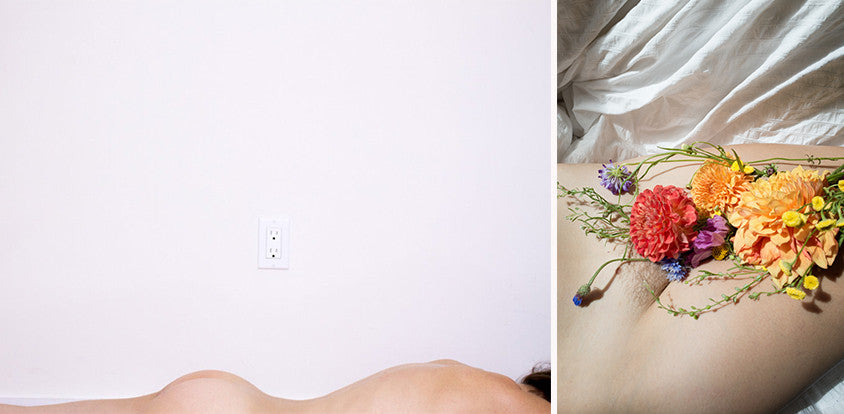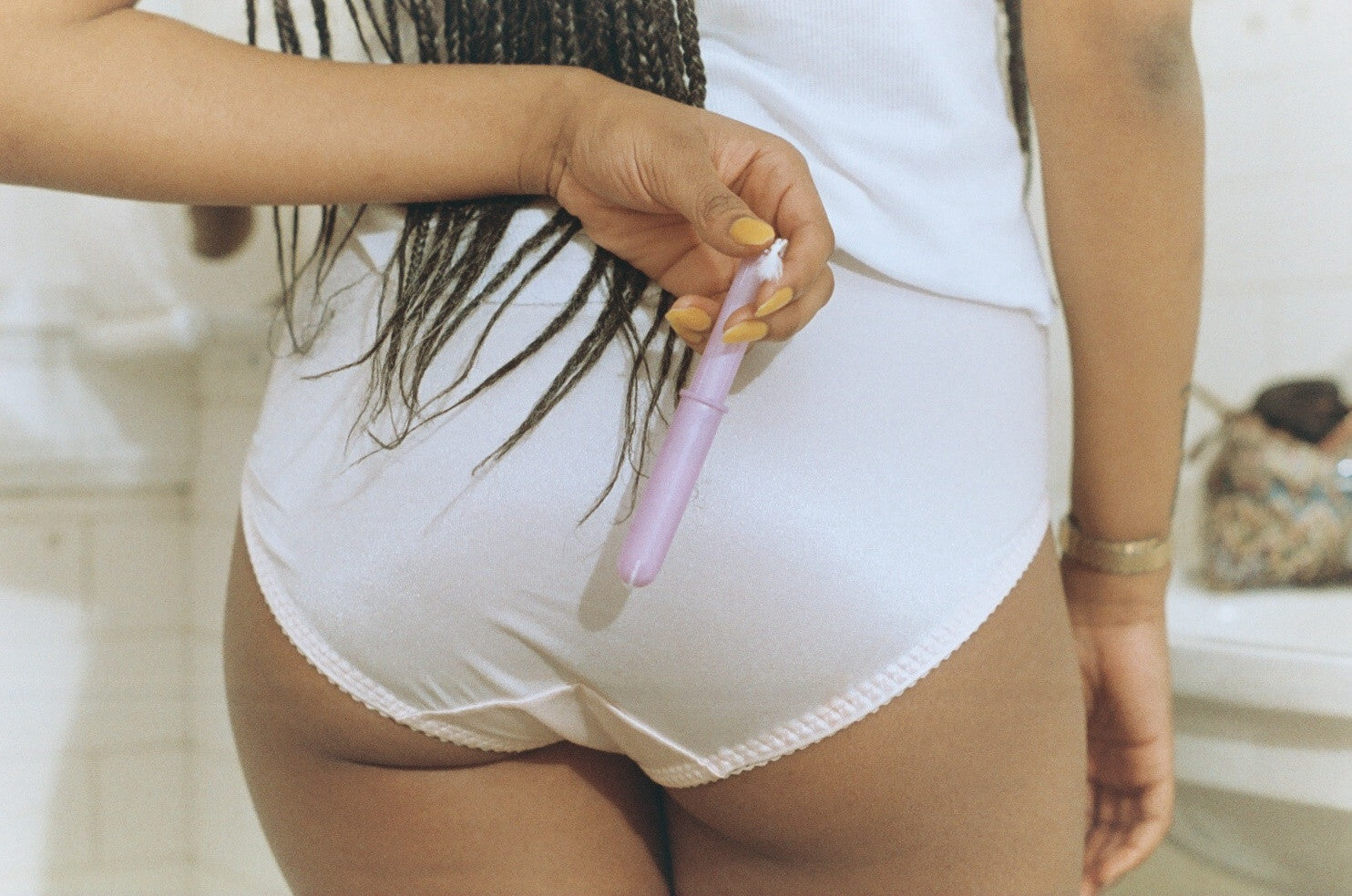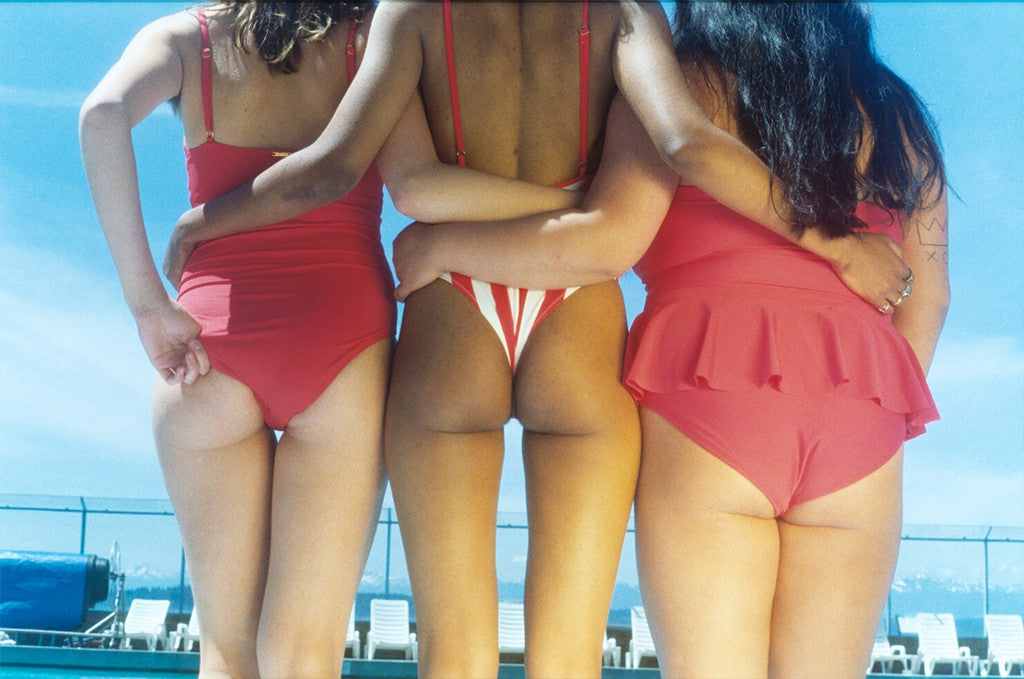Open Book: Portraiture with a New Angle
Wether it's an intimate portrait of a stranger, a still life of secret PMS behaviors of Lena users, or an obstructed nude of herself, San Francisco based photographer Emily Alexander is obsessed with bringing out the beauty, and emotion, from the unexpected. Alexander's professional work might be in the beauty and fashion industries, but her personal series bring an edge to each subject. She mostly shoots women in surrealist lighting or through the gaze of a reflection, challenging us to look closer, ask questions, and sometimes feel a bit uncomfortable.
We lean in a take an up close and personal look at Alexander's stunning photographs, talking inspiration, collecting Snapchats, and how, without a mother growing up, it was art that helped her forge her own path into womanhood.

When did you start taking photographs? How would you describe the style of your work?
I started taking photos when I was 17. I borrowed a friend’s Dad’s camera and took a lot of terrible photos. Mostly of my feet. My feet and grass. When I was 19 I bought my own camera - a Nikon FM2. Still have it. It taught me all the basics and after taking one photography darkroom class I knew I found my tool.
Photography has always been an emotional reaction for me. The first photo I remember taking was because I wanted to keep a pair of shoes I had outgrown and the only way I could convince my mom to let me keep them forever was to take a photo, and keep that forever. I was maybe 7 years old. My personal work now is all about experiencing, and understanding emotions.
What are your main influences in your photos?
My perspective as a woman. Expectations, obligations and boundaries that are so culturally rooted and affect everyday life. I just don’t relate to the mainstream woman that I see in mainstream media, and I enjoying exploring and challenging that in my work. I enjoy shooting the things I don’t want to talk about, or don’t know how to talk about. I’m also somewhat of a dramatic person, so most of the time my photos convey that intensity.

How would you describe your work in 3 words?
This is hard because I feel like it’s constantly developing. Right now - intimate, playful, provocative.
Can you talk about the themes in your VENUS series?
It’s an ongoing project exploring how women perceive beauty.
What about your new Snapchat series?
I’ve been collecting screenshots of Snapchats I’ve received over the past two years. I love Snapchat. It feels a bit more honest for some reason. Everything is instant, and everything is temporary. It’s an interesting venue that a lot of my friends share whatever they’re feeling at that moment. I’ve been collecting stories of heartbreak, empowerment, depression, and pure playfulness. I’m excited to start printing and hanging these because I’m organizing them by emotion.

Your work shows a balance of both strength and softness, especially with your female subjects. How do you hope to represent women in your work?
I want to represent them the way they want to be represented. I think that choice tells a story. I had a hard childhood without a mom to show me the ropes of womanhood, and that really affected how I viewed myself and other women. I know there’s a lot of other women out there that can relate. My Cry If I Wanna series has been a person project years in the making of going back to basics and reteaching and confronting all the things that my mom wasn’t there for. I want to show women that softness and vulnerability is strength. That all the things we feel are valid and important. Feminism, gender, sexuality, and mental health are all themes in my photography. I want my work inspire others to explore their own emotions, and create a sense of community with not just for women but anyone and everyone.
Who are some of your heroes right now?
Forever Nan Goldin. Viviane Sassen, Lula Hyers, Rinko Kawauchi.

What advice would you give to young artists and women about creating meaningful work today?
Try to connect the dots between your personal work and your everyday life. Once you can figure that out, it’s much easier to snap into a productive headspace. Practice every day, and put your work out there. Trust your instincts and have confidence in your work.



